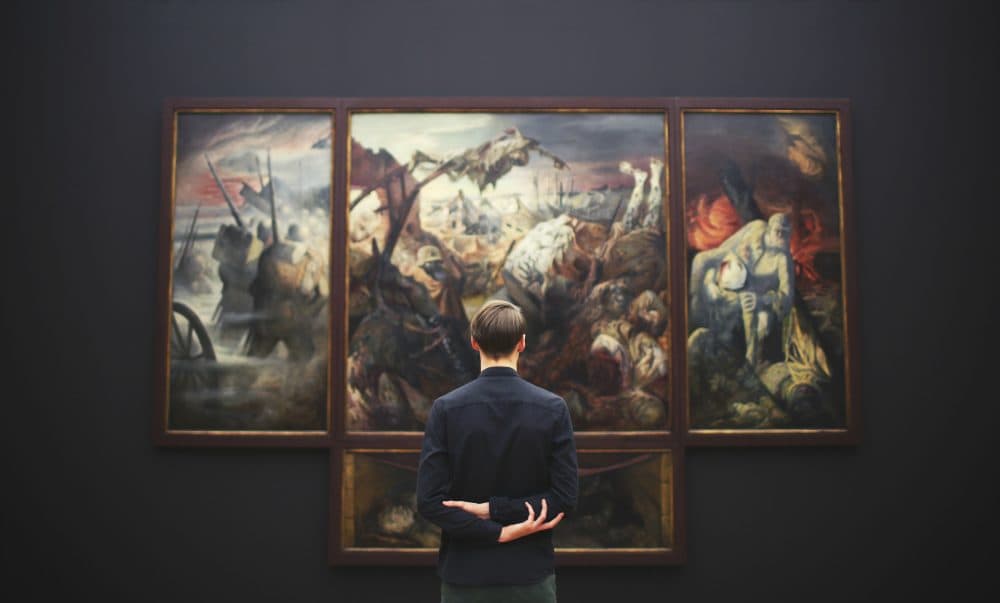Advertisement
Commentary
Rx For What Ails Us: A Doctor's Case Against Cutting Arts Funding

The Trump administration’s plan to cut funding for the National Endowment for the Arts (NEA) has drawn criticism from both Republicans and Democrats. In the days since the administration released its proposed budget, which would also cut funding for the National Endowment for the Humanities (NEH), 24 senators from both parties signed a letter asking the president to reconsider eliminating these agencies. The letter cites the power of the arts to forge cultural bonds, stimulate the economy, and enrich our education system. The senators might have included another reason for keeping these programs alive: By influencing the cultural context in which we live, the arts also help to promote health.
Health is not just a matter of medicine and disease. It is fundamentally informed by the social, economic and environmental conditions that surround us; these conditions are, in turn, subject to the influence of economic trends, political policies and the emergence of social movements. They are also influenced by culture, which is deeply influenced by art.
Art has the unique power to make abstract social, economic and environmental conditions of health resonate in ways that the straight facts about them might not.
As a representation of these fundamental conditions of health, art holds a “mirror up to nature” in which we can see the forces that have shaped wellbeing throughout history. This was well expressed by the filmmaker Alex Horwitz at a panel discussion at the Boston University School of Public Health last week, "Creating Culture, Making Change: The Role of Entertainment in Global Health.” His art is telling stories on film, most recently in his documentary "Hamilton’s America." Stories “[D]istill data…distill fact…distill science…into empathy, into common reference points,” Horwitz told his audience.
Empathy and the creation of common reference points through art have long been powerful tools for nudging culture in a healthier direction. In the 19th century, art played a key role in reforming the often unhealthy conditions of cities during the Industrial Revolution. The overcrowded, unsanitary reality of urban spaces provided a rich subject for poets, writers, and painters, many of whom expressed concern for marginalized populations, such as children and the working poor. The plight of these groups, and the broader conditions of the period, inspired reforms like the Public Health Act of 1848; they also inspired the work of Charles Dickens, Joseph Turner and William Blake, among other artists. Dickens, in novels like "David Copperfield" and "Oliver Twist," created unforgettable portraits of how the Industrial Revolution undermined the wellbeing of children and the poor. This work, which helped foster public sympathy for the less-well-off, was of a piece with Dickens’s lifelong social activism. The lives of the marginalized were also dramatized by Blake, notably in his “Chimney Sweeper” poems. The fast-paced, rapidly urbanizing England of Dickens and Blake was also brought to life on Turner’s canvases, which continue to thrill art lovers to this day.
Art can also be indispensable during times of acute public health crisis, helping affected populations to express themselves and generate awareness to catalyze support.
Art can also be indispensable during times of acute public health crisis, helping affected populations to express themselves and generate awareness to catalyze support. During the HIV/AIDS crisis of the 1980s and 1990s, a number of creative voices emerged to tell the stories of a community facing stigma, forging the social ties that ultimately created an AIDS awareness movement. The playwrights Larry Kramer and Tony Kushner, for example, wrote plays that made the threat faced by the gay community at that time unignorable. (It is worth mentioning that Kushner’s Pulitzer Prize-winning play, "Angels in America," was completed with help from the NEA, which gave him a special grant). Other iconic works include Keith Haring’s "Silence = Death," and the NAMES Project AIDS Memorial Quilt, founded by the artist Cleve Jones. Each of these creations represents American art at its most dynamic; taken together, they convey a narrative of suffering and resilience that inspired a movement, leading to the development of drugs and therapies that now allow us to plausibly envision a world without HIV/AIDS.
Art has the unique power to make abstract social, economic and environmental conditions of health resonate in ways that the straight facts about them might not. An excellent example of is Al Gore’s 2006 documentary "An Inconvenient Truth," which presented the generation-defining issue of climate change in dramatically compelling terms. The fact that Gore chose to release the trailer to the film’s sequel this week—framed as a response to the climate change denial of the Trump administration—makes it clear that it is now more important than ever for us to support the arts, not only for their own sake, but for their ability to foster empathy, raise awareness, and contribute to the creation of healthy populations.
